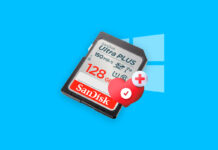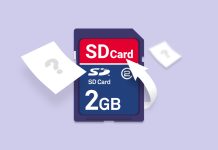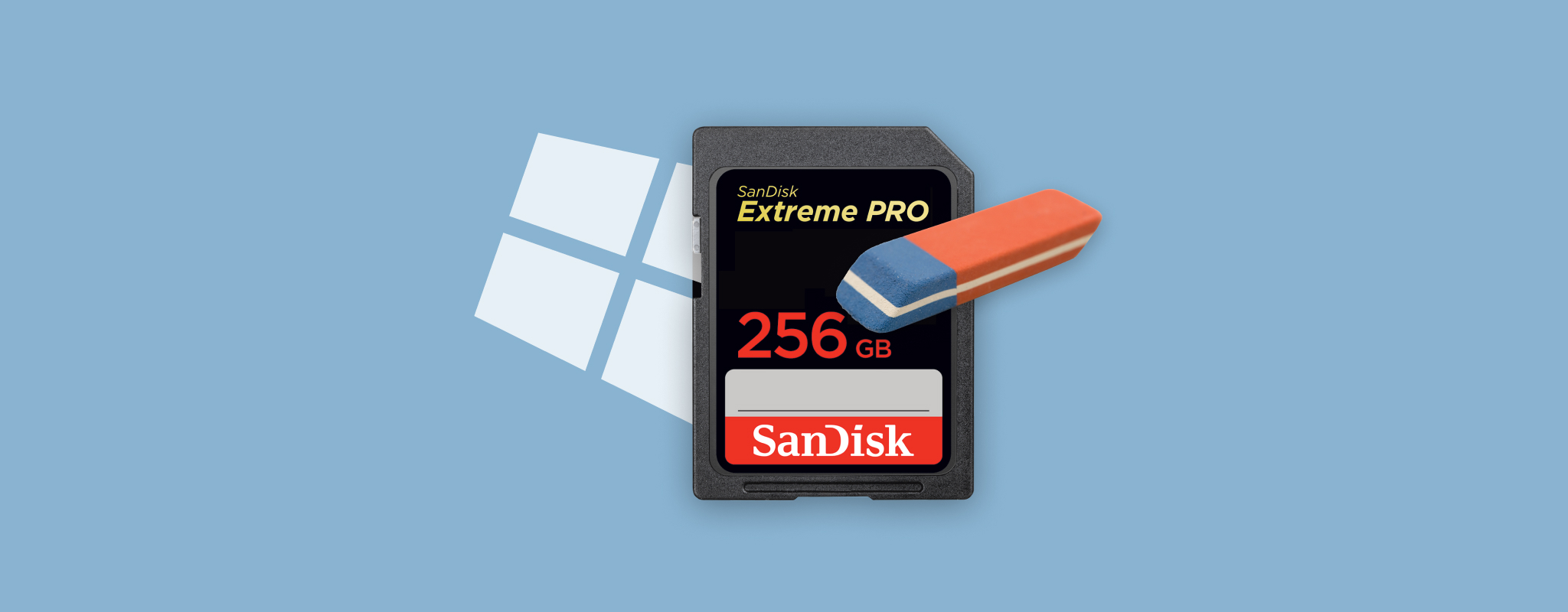
SD cards help expand your smartphone’s storage so you can store more pictures and install more apps without maxing out your device’s storage. SanDisk is a popular and reliable brand, but is still prone to an occasional malfunction, which may compel you to format your SD card.
If you’re planning to format a SanDisk SD card, but don’t know where to start, we’ve got you covered. We’ll walk you through the process of how you can easily format a SanDisk Micro SD card in the next few minutes.
Table of Contents
What is SD Card Formatting?
SD card formatting is the process of erasing every file stored on your SD card, including the ones that are hidden. You can format an SD card for several reasons including:
| Reason | Description |
| 🕷️ Presence of malware or virus | If your antivirus program has detected a virus on your SD card, formatting it will help get rid of it. |
| 🗃️ Changing the SD card’s file system | When you format an SD card, you have the option to change its file system. For instance, if your SD card is currently formatted as a FAT32 device, you can reformat it to exFAT and enjoy the exFAT file system’s high compatibility and greater speeds. |
| 🚪 Make room for new data | You may also just want to erase all the data to make room for new data. |
Formatting an SD card isn’t difficult. However, once you format an SD card, you won’t have access to any of the files you had stored on your SD card. That’s why it’s imperative to back up important files that were stored on your SD card before formatting it. However, it’s possible that you want to format a card to fix an error and so may not be able to access your files on SD card. In this case you can avoid losing your data with the help of specialized software.
Avoid Losing Data on SD Card When Formatting
Either you can’t backup your files before formatting or you’ve accidentaly formatted card before backing up your data – don’t panic. You can recover files to PC using professional data recovery software such as Disk Drill – it supports over 400 file formats and will recover data from your SanDisk card with ease, as long as card shows in disk management and shows correct size.
The easiest way to recover data from a formatted SanDisk SD card is using an advanced data recovery tool like Disk Drill.
- The first step is to download and install Disk Drill on your PC. You may need to provide a few permissions during the installation process.

- Once the installation is complete, launch Disk Drill. Look for the Sandisk SD card you want to recover files from and select it. Once you slected required SD card click on Search for lost data to start the scan.
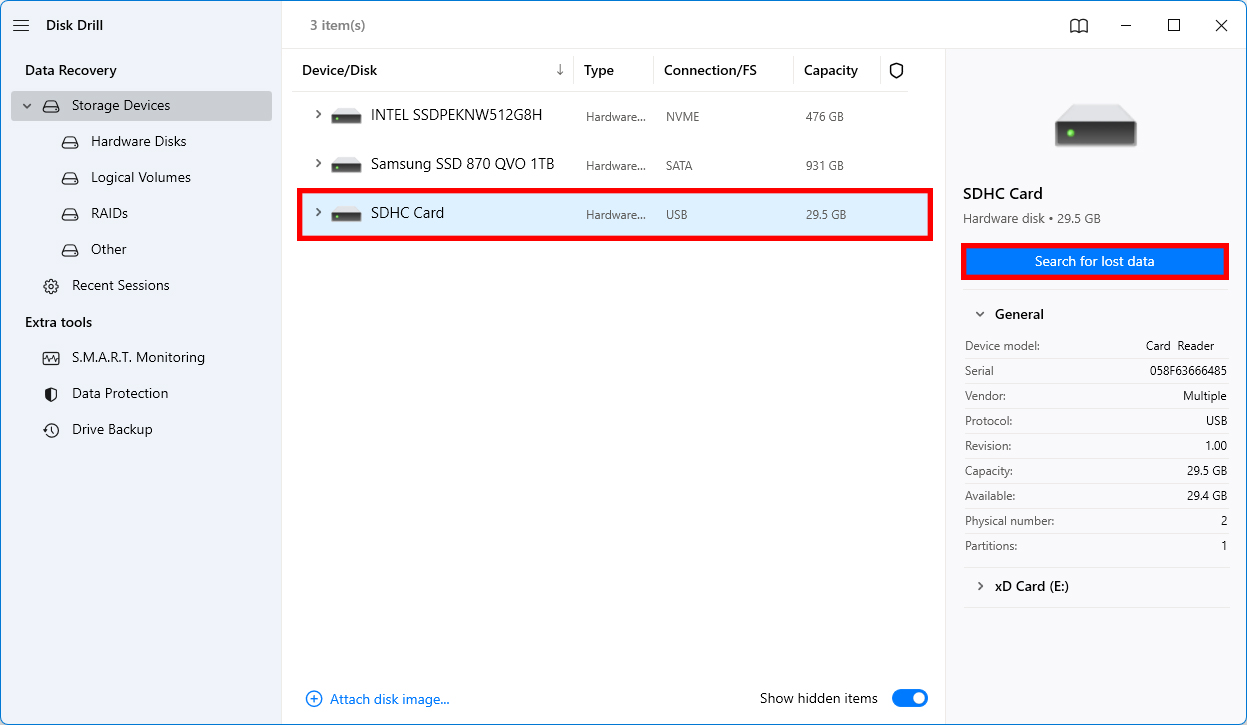
- As Disk Drill scans your formatted SD card, you’ll be able to see the types of files it finds in real-time. If you’re trying to recover photos, you can select Pictures once there are a few pictures Disk Drill finds while scanning.
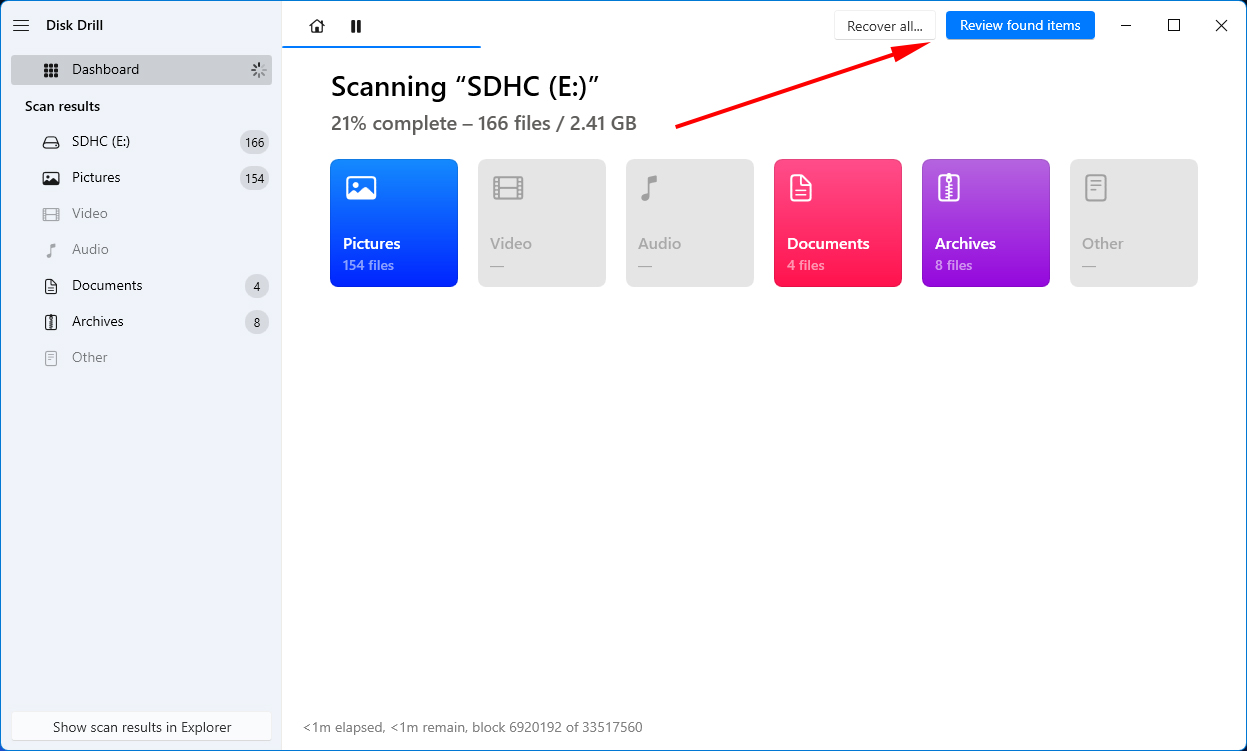
- Once you find the file you want to recover, check the box beside it and click on Recover.
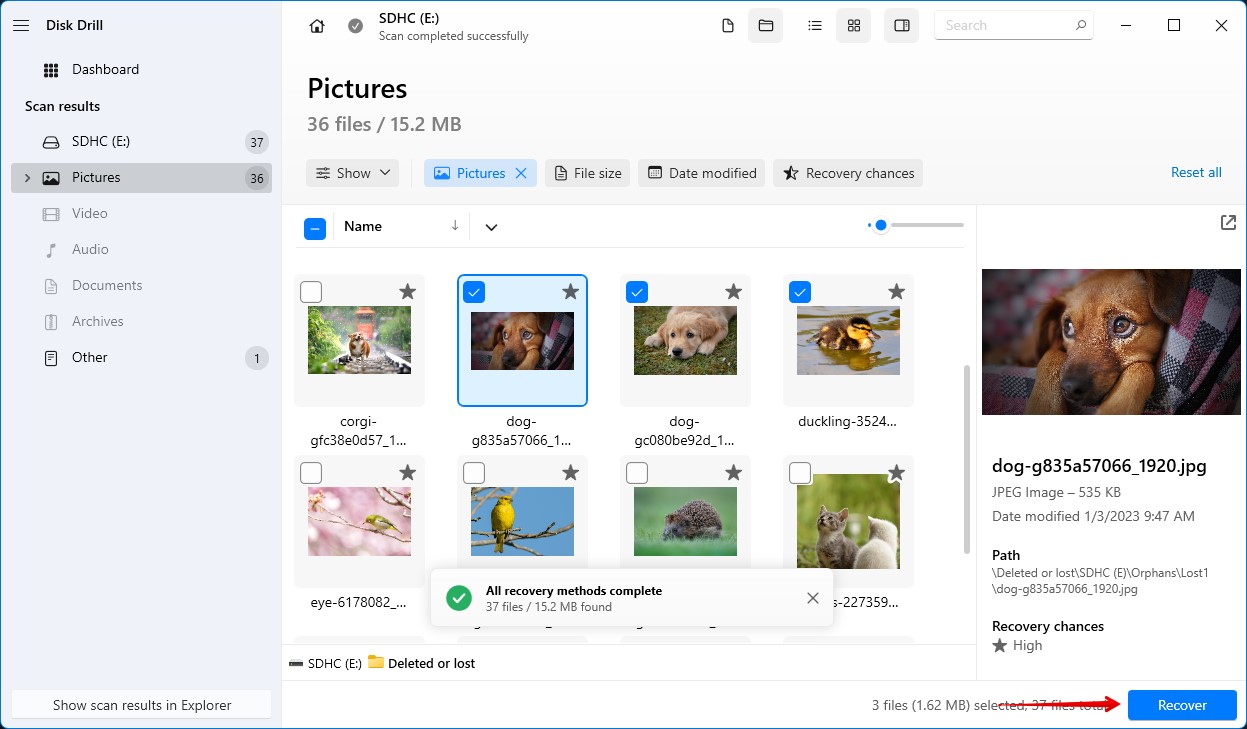
- If you want to recover all files instead click on Recover all. Enter the location to where you want to recover the files and click on Next.

That’s all you need to do to recover data after you format a SanDisk Micro SD card.
Note that the chances of recovery depend on how much data you’ve written onto your card after formatting it. If you’ve stored a lot of data after the formatting event, there’s a possibility that your old data has been overwritten. However, if you recently formatted the SD card, there’s a high chance that you’ll be able to recover that data with the software.
How to Format a SanDisk SD Card on Windows?
Formatting SanDisk Micro SD cards on Windows is a cakewalk and doesn’t require any technical knowledge. However, since there are several ways to format or reformat a micro SD card on Windows, we’ll walk you through each method separately.
Method 1:Windows File Explorer
This is usually the simplest way to format your SD card because it’s quick and easy.
- Start by inserting your SD card into your laptop or PC’s card reader.
- Launch Windows Explorer by pressing Win + E, and go to Computer.
- Next, right-click on the SD card and select Format.

- When the Format window opens, select the preferred File system, change the Volume label if you wish to, and click on the Start button.
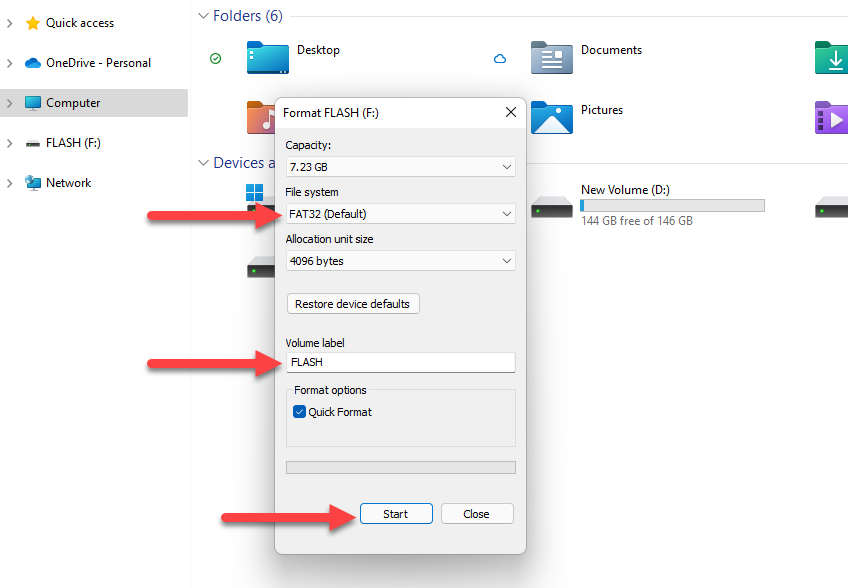
Formatting only takes a couple of seconds. Once it’s done, you’ll be able to use your clean SD card.
Method 2:DiskPart
DiskPart is a built-in command-line utility that allows formatting drives without having to use the Windows GUI. If you run into any issues with the previous method, you may want to give DiskPart a shot.
- Start by running the Command Prompt as an administrator. Search for Command Prompt in the Start Menu and select Run as administrator.
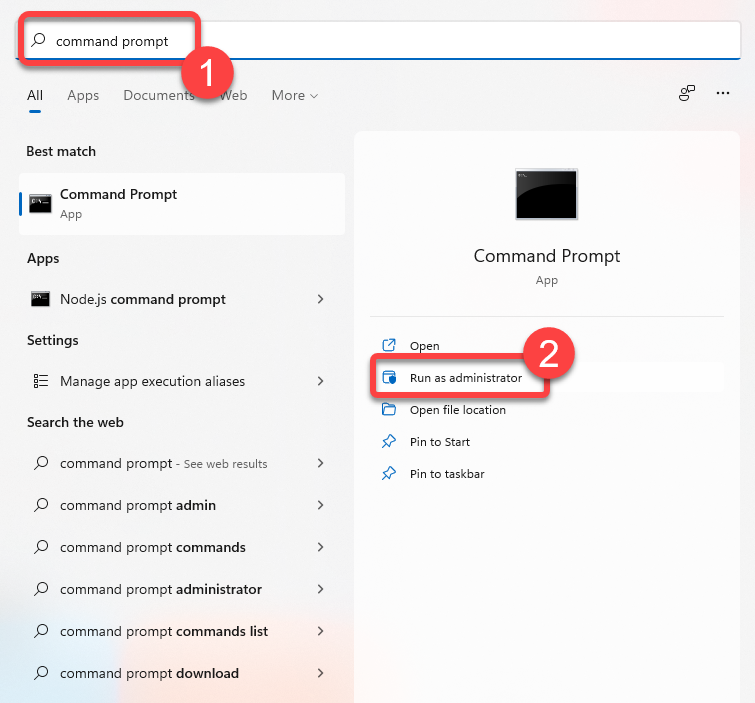
- Type
diskpartinto the Command Prompt and press Enter. - Then, type
list diskand press Enter. This will show you a list of drives on your computer.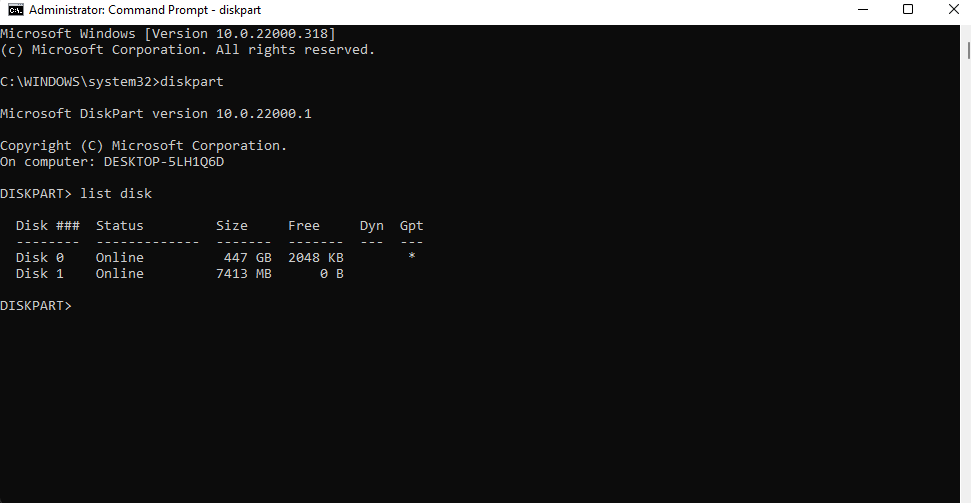
- Identify your SD card on the list. The size of the disk is the best indicator of which disk your SD card is. Once you’ve found the SD card, you’ll need to select it with the following command:
select disk 1 - Then, type
list volumeand press Enter. Then, find and select the SD card volume using the following command:select volume 5
- Then, run the following command to start formatting your SanDisk SD card:
format fs=exfat
You can, of course, change the file system by tweaking the command. For instance, if you want to format the SD card as NTFS, you can usefs=ntfs. - Once the formatting is complete, exit the Command Prompt, and you’re done.
Method 3:Disk Management
You can also use another built-in Windows utility called Disk Management to format or reformat SanDisk SD cards. The following steps will help you format your SD card using the Disk Management tool in Windows.
- Search for Disk Management in the Start Menu and select Create and format hard disk partitions.
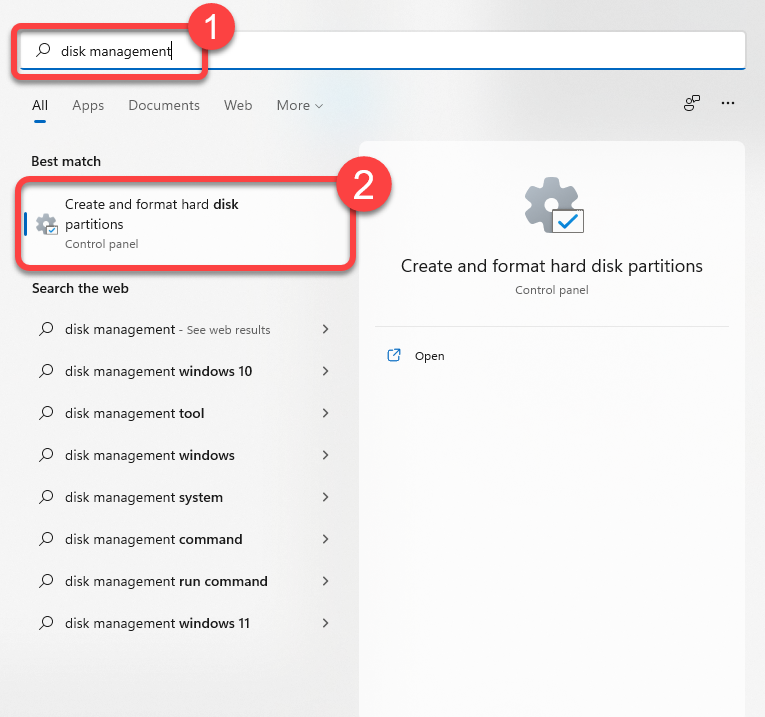
- Look for your SD card in the Disk Management tool, right-click on it, and select Format.
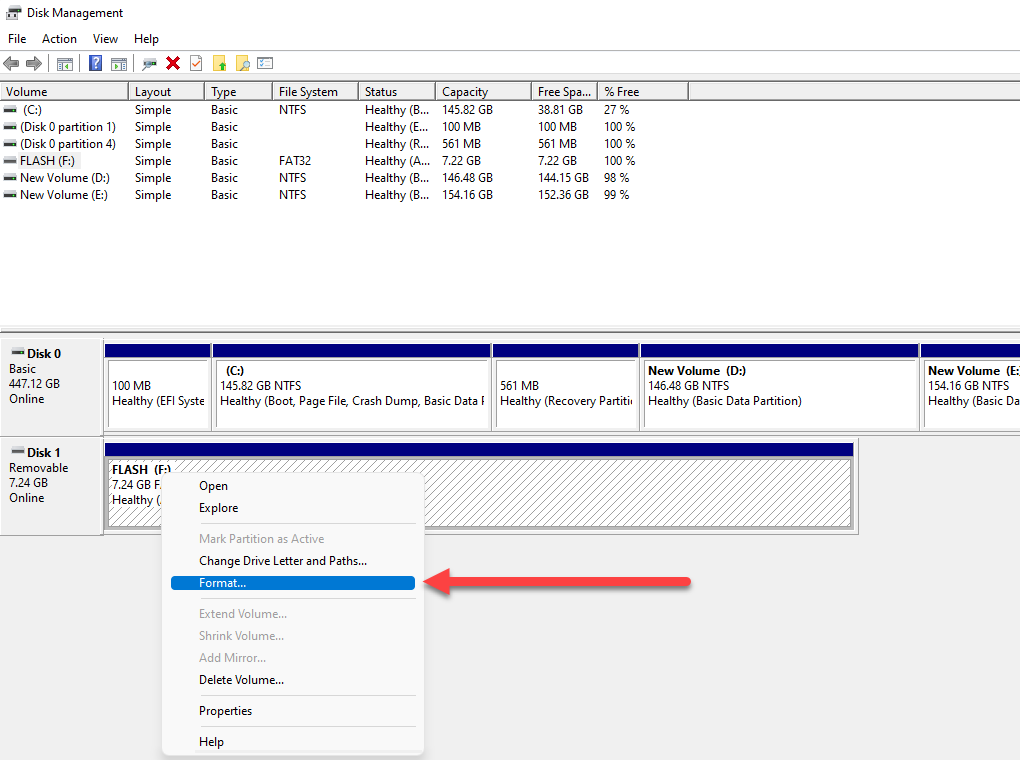
- A small format window should pop up. Enter a Volume label if you want to change it, select a File system, and ensure the checkbox next to the Perform a quick format option is checked. Then, click OK.

Let the formatting process complete, and that’s all you need to do for formatting your SanDisk SD card.
Method 4:SanDisk Formatting Tool (AOMEI Partition Assistant)
You can use built-in Windows tools to format SanDisk SD cards, but all of them come with limitations. For instance, not being able to format SD cards larger than 32GB to FAT32. However, you can use a third-party tool like the AOMEI Partition Assistant.
AOMEI Partition Assistant is a free SanDisk SD card formatter that can make the process faster and simpler. You can also use the utility to format write-protected SD cards and, of course, SD cards from other brands.
- Start by downloading the AOMEI Partition Assistant and installing it on your computer.
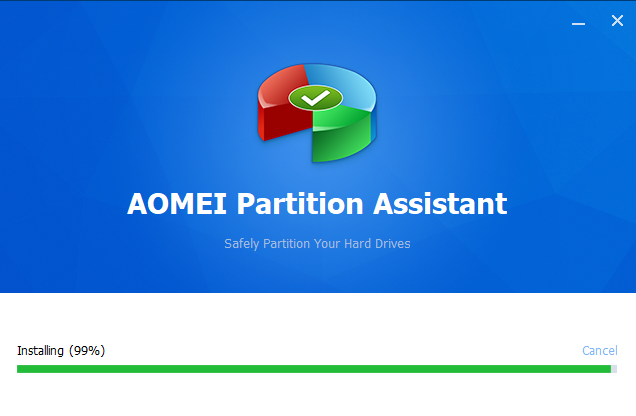
- Launch the utility and look for the SD card you want to format. Right-click on it and select Format Partition.

- You should see a pop-up window where you can assign a partition label and a file system. Enter your preferences and click OK.
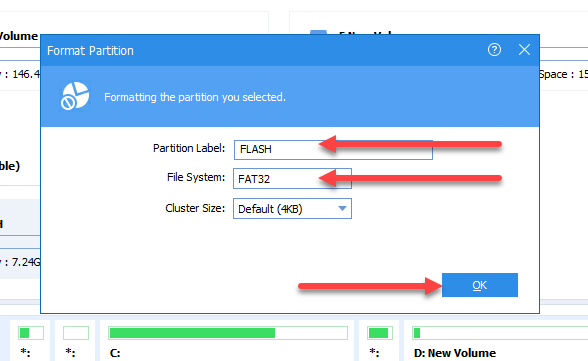
- When you’re done, click Apply from the top-right of the utility’s interface to apply the changes.
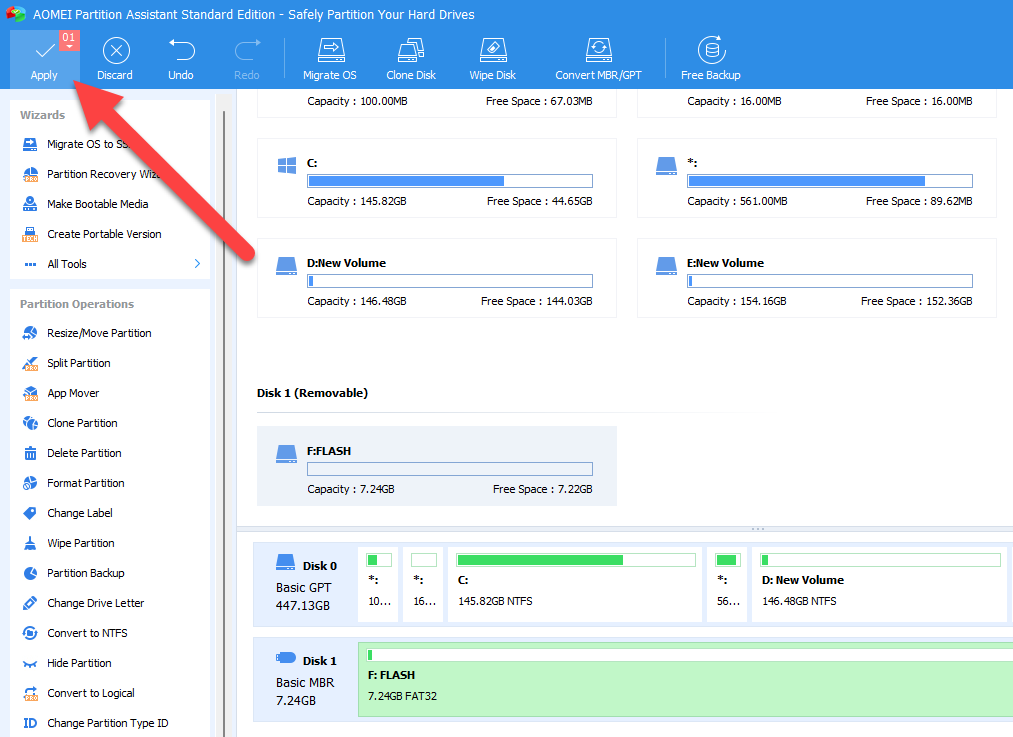
Easy, right?
But wouldn’t it be even easier if you never had to pull out your SD card from your phone and into your PC just for formatting it? Well, you don’t need to.
How to Format SanDisk SD Card on Android
You can format SanDisk SD cards from an Android phone. You don’t need to remove them and insert them into your PC’s card reader.
However, the interface typically differs based on which Android device you’re using. For instance, the menus and options may be placed slightly differently on the Oxygen UI vs. the stock Android UI.
Regardless, the process, in general, remains the same. We’ll highlight the process using the RealMe UI.
- Start by going to the Settings app on your Android phone.
- Look for Storage or a similar option in your Settings app.
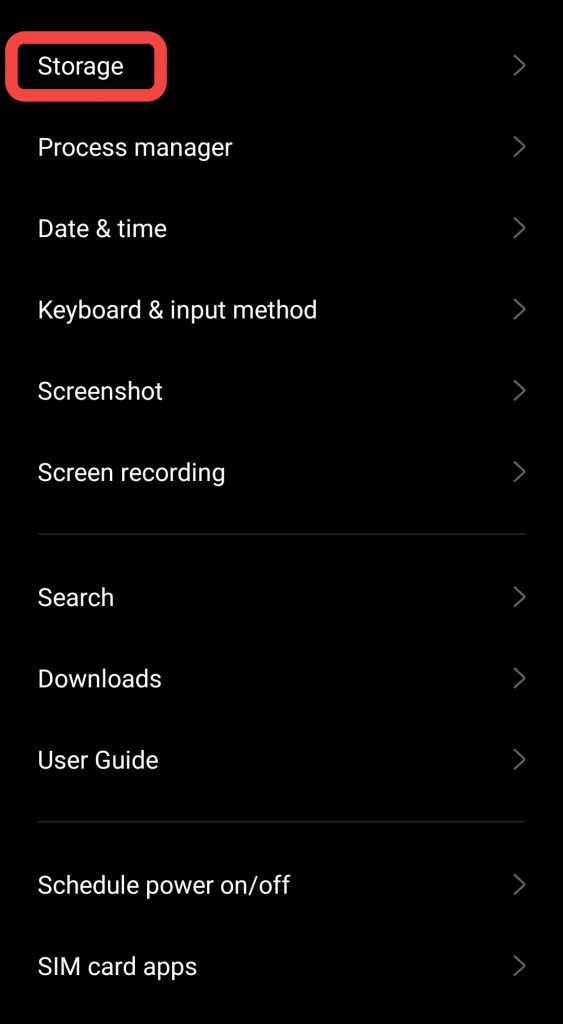
- Within the Storage section, you’ll find the total storage of your Android phone divided into two parts. One is your phone’s storage, and the other is your SD card.
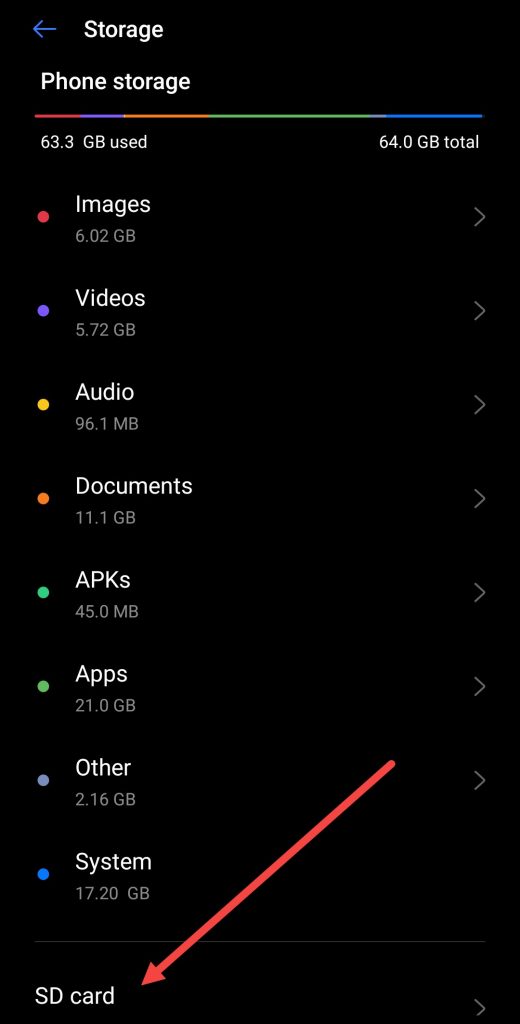
- Click on your SD card and look for the Format option. Click on it.
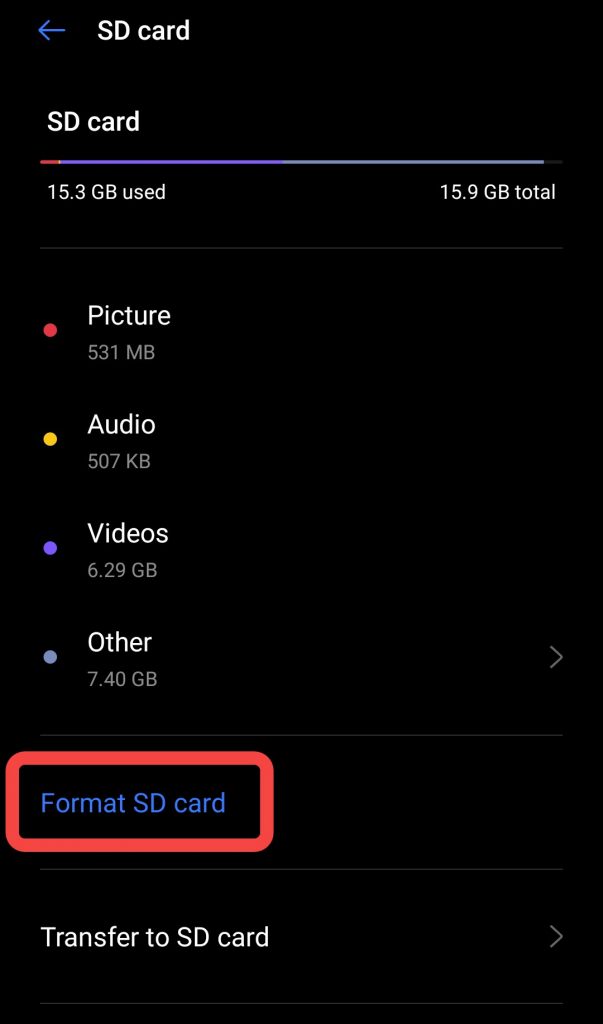
- You’ll probably be asked for confirmation to move ahead without the formatting. Allow the permission.
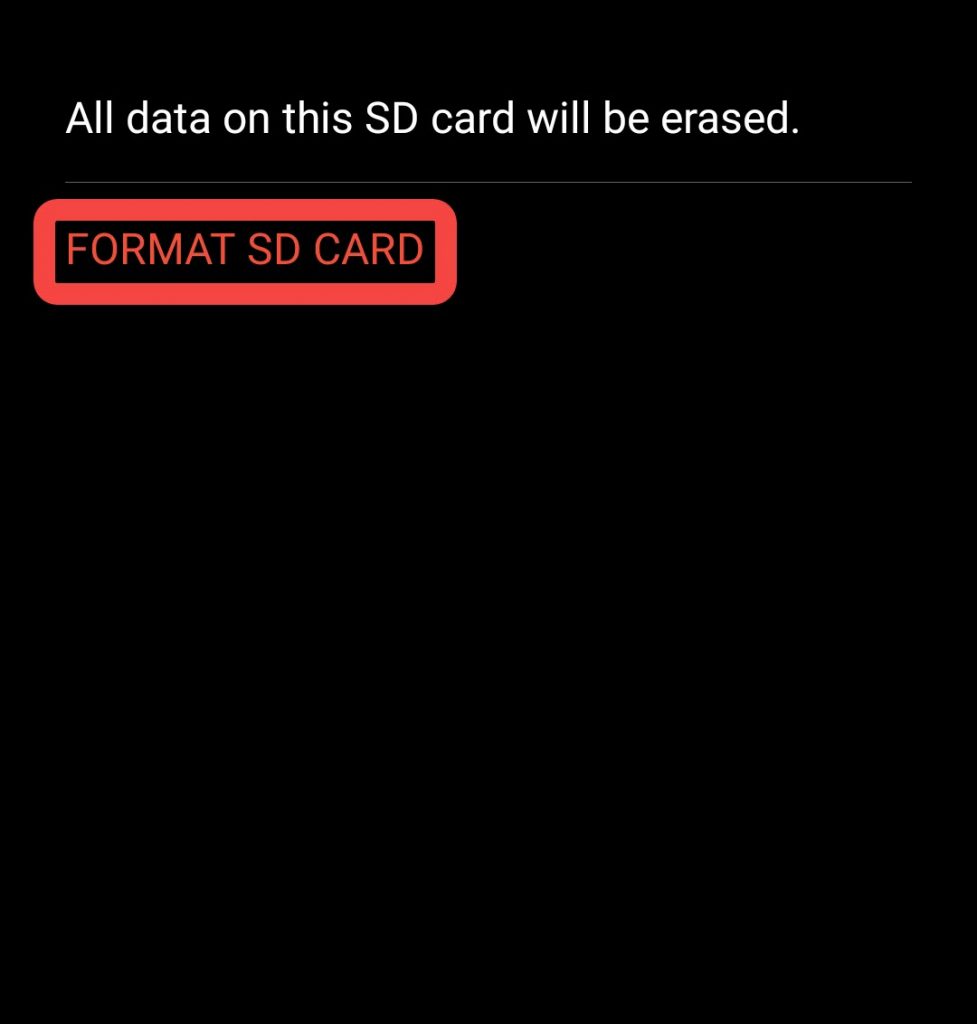
Once the process completes, you’ll have formatted your SD card.
